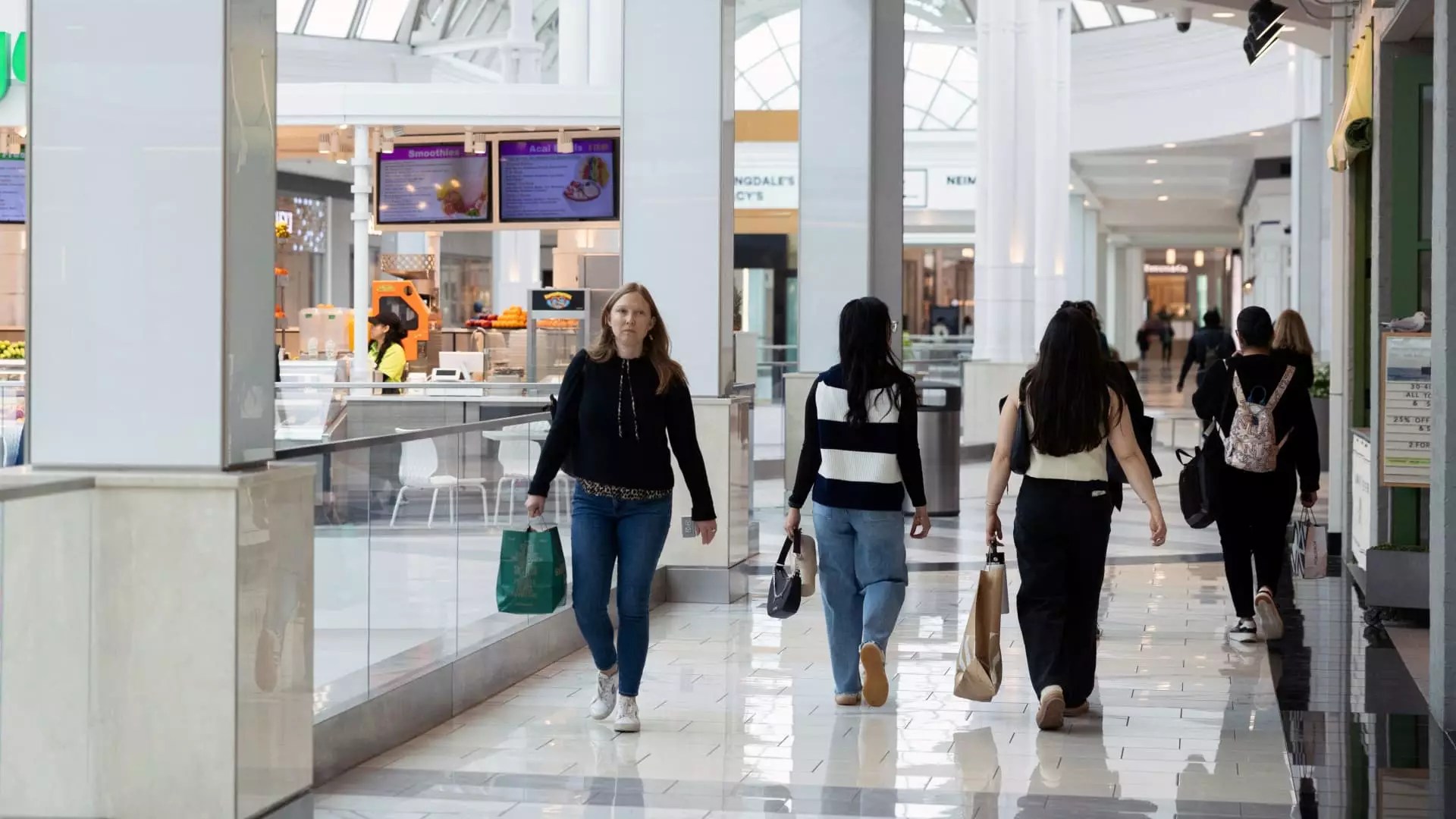As we embark on 2025, the American consumer landscape starkly contrasts the experiences of different income brackets. The ongoing conflict between lower-income households and their affluent counterparts echoes through every shopping street and bustling airport. While the wealthy continue to revel in lavish spending—indulging in gourmet dining and luxury vacations—those at the bottom of the income spectrum are tightening their belts, focusing solely on essentials. This alarming disparity is not just a financial statistic; it reflects a deep-rooted economic divide that threatens to disrupt society’s fabric.
Consumer Sentiment: A Worrying Shift
Recent credit card data depict a nuanced narrative. Companies like Synchrony, which cater predominantly to lower-income earners, reported a troubling 4% dip in spending as the first quarter unfolded. This trend is not isolated; it showcases a pattern that has formed over the last year, driven largely by rising inflation and the escalating cost of living. In stark contrast, luxury brands serviced by American Express and JPMorgan Chase experienced a delightful uptick in consumer spending—7% and 6%, respectively. The affluent remain undeterred by external economic pressures, while the economically vulnerable brace themselves for an impending financial storm.
Inflation is one of the culprits driving this anxiety. As prices rise, lower-income earners are forced to reconsider their purchasing decisions. There’s a palpable tension brewing, as these consumers—once accustomed to discretionary spending—discover new limits imposed by their dwindling purchasing power. This discrepancy in spending behaviors reveals a speculative forecast: will the lower end eventually experience a tipping point that precipitates deeper economic turmoil?
Debt Dilemma: A Nation on the Brink
The implications of these spending shifts highlight a systemic issue that transcends individual experiences. Data released from the Federal Reserve Bank of Philadelphia reveals that the share of credit card users who are only making minimum payments has soared to 11.1%, the highest rate in over a decade. This suggests that many are not only struggling to meet their expenses but are also entering a dangerous cycle of debt that may ensnare them indefinitely. Credit cards, often dubbed as a ‘safety net’, are becoming anchors of financial distress for lower-income earners.
The economic mistakes made by policymakers exacerbate the situation, with tariffs and inflation policies disproportionately impacting the lower middle class. They are left not only trying to make ends meet but also facing the harsh reality of unmanageable debt—an unfortunate consequence of insufficient support from institutions that ought to understand their plight.
Luxury vs. Necessity: Consumers Making Choices
The ongoing economic divide sheds light on a significant shift in consumer priorities. Analysts have noted a pullback from travel and entertainment toward purchasing electronics, home furnishings, and automotive parts. Evidently, consumers are becoming hyper-selective regarding their expenditures. The funding behind luxury experiences does not appear to be waning, but those on tighter budgets are wrestling with painfully calculated choices: buy a new television or fix the car?
This behavioral shift emphasizes the insecurity felt by those who inhabit the lower economic strata. Initiatives aimed at bridging this divide are crucial, as the continued favoring of the wealthy reinforces a dangerous status quo. It raises pertinent questions: Who benefits from the current economic policies? How can we innovate economic strategies to ensure that growth is inclusive rather than exclusive?
The Warnings From Credit Analysts
Insights from financial analysts accentuate the disjointed nature of our economic recovery. Brian Foran from Truist emphasized how the high-end consumer base has been resilient while the lower segment continues to falter. This emerging trend is not just a fleeting statistic; it foretells potential long-term ramifications for the economy. As businesses double down on strategies that favor affluent customers, they risk alienating a significant portion of the consumer base—one that, if empowered, could rejuvenate the economy.
In navigating the labyrinth of this economic divide, it is essential that we acknowledge the different realities of various consumer demographics and foster policies and initiatives that create equitable opportunities for all. The disconnect between luxury spending and basic necessities cannot persist without consequences; nurturing the lower-income segment is imperative not just for economic stability but for social cohesion as well.


Leave a Reply